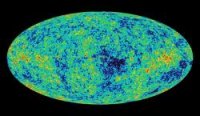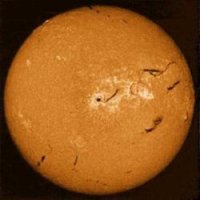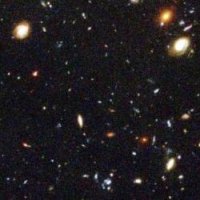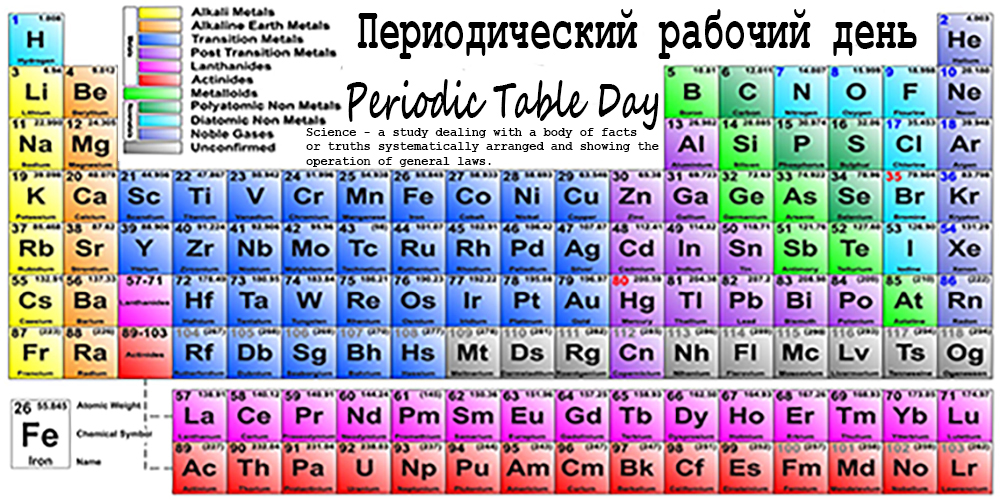Why does the Heat Death matter?
What is the Heat Death? A description of the death of the Universe or when it turns back into emptiness. The Big Bang states that Emptiness formed Nothing; then Nothing formed Something. The Big Bang is viewed as a singularity, which means it has only occured once or has never before happened. The Heat Death is an assessment of part of the cycle in a Finite description of the Universe.
Why does the Heat Death matter? Once an experiment is complete in Science, the data is collected; then an analysis of the data is reported as a conclusion. The heat death destroys all data supporting the Big Bang Theory.This does matter, because the big bang is looking back in time to collect data. Moreover, data that will eventually be destroyed looking forward in time and using a similar time duration is not reliable data. Reliable data is only reliable, if it is true. True being that it never turns into data that does not support or provide any evidence for a conclusion. This is not an imaginary conclusion, since all data will be gone providing any support of the Big Bang. In any crime, evidence must be documented and supported or eventually the guity party will be exonerated and released from prison.
http://www.physlink.com/education/askexperts/ae181.cfm
The 'heat-death' of the universe is when the universe has reached a state of maximum entropy. This happens when all available energy (such as from a hot source) has moved to places of less energy (such as a colder source). Once this has happened, no more work can be extracted from the universe. Since heat ceases to flow, no more work can be acquired from heat transfer. This same kind of equilibrium state will also happen with all other forms of energy (mechanical, electrical, etc.). Since no more work can be extracted from the universe at that point, it is effectively dead, especially for the purposes of humankind.
This concept is quite different from what is commonly referred to as 'cold death.' 'Cold death' is when the universe continues to expand forever. Because of this expansion, the universe continues to cool down. Eventually, the universe will be too cold to support any life, it will end in a whimper. The opposite of 'cold death,' as you can see, is NOT 'heat death,' but actually the 'big crunch.' The 'big crunch' occurs when the universe has enough matter density to contract back on itself, eventually shrinking to a point. This shrinking will cause the temperature to rise, resulting in a very hot end of the universe.
Discussions of the concept of 'heat death' can be found in some thermodynamics textbooks. The ideas of 'cold death' and the 'big crunch' can be found in textbooks on cosmology, such as The Early Universe by Kolb and Turner. Or, if you prefer and less technical discussion, you might want to try Black Holes and Time Warps by Kip Thorne.
Answered by: Andreas Birkedal-Hansen, M.A., Physics Grad Student, UC Berkeley
The heat death of the universe will only occur if the universe will last for an infinite amount of time (i.e there will be no big crunch).
It will occur because according to the second law of thermodynamics, the amount of entropy in a system must always increase. The amount of entropy in a system is a measure of how disordered the system is - the higher the entropy, the more disordered it is..
It is sometimes easier to imagine if you think of an experiment on earth. A chemical reaction will only occur if it results in an increase of entropy. Let us imagine burning petrol. We start of with a liquid that contains atoms arranged in long chains - fairly ordered. When we burn it, we create a lot of heat, as well as water vapour and carbon dioxide. Both of these are small gaseous molecules, so the amount of disorder of the atoms in their molecules has increased, and the temp. of the surroundings has also increased.
Now lets think what this means for the universe. Any reaction that takes place will either result in the products becoming less ordered, or heat being given off. This means at some time far in the future, when all the possible reactions have taken place, all that will be left is heat (i.e electromagnetic radiation) and fundamental particles. No reactions will be possible, because the universe will have reached its maximum entropy. The only reactions that can take place will result in a decrease of entropy, which is not possible, so in effect the universe will have died.
I found that a good book on the subject is called 'The Last Three Minutes' by Paul Davies. He describes how the universe might die a heat death, and also argues that it may be possible that a big crunch will occur instead.
What is the evidence for the Big Bang Theory?
The Big Bang happened everywhere at once: https://physics.stackexchange.com/questions/136860/did-the-big-bang-happen-at-a-point
Explanation of Red Shift: http://www.bbc.co.uk/schools/gcsebitesize/science/aqa_pre_2011/radiation/originsrev2.shtml
https://www.universetoday.com/106498/what-is-the-evidence-for-the-big-bang/
Almost all astronomers agree on the theory of the Big Bang, that the entire Universe is spreading apart, with distant galaxies speeding away from us in all directions. Run the clock backwards to 13.8 billion years ago, and everything in the Cosmos started out as a single point in space. In an instant, everything expanded outward from that location, forming the energy, atoms and eventually the stars and galaxies we see today. But to call this concept merely a theory is to misjudge the overwhelming amount of evidence.
There are separate lines of evidence, each of which independently points towards this as the origin story for our Universe. The first came with the amazing discovery that almost all galaxies are moving away from us.
In 1912, Vesto Slipher calculated the speed and direction of “spiral nebulae” by measuring the change in the wavelengths of light coming from them. He realized that most of them were moving away from us. We now know these objects are galaxies, but a century ago astronomers thought these vast collections of stars might actually be within the Milky Way.
In 1924, Edwin Hubble figured out that these galaxies are actually outside the Milky Way. He observed a special type of variable star that has a direct relationship between its energy output and the time it takes to pulse in brightness. By finding these variable stars in other galaxies, he was able to calculate how far away they were. Hubble discovered that all these galaxies are outside our own Milky Way, millions of light-years away.
So, if these galaxies are far, far away, and moving quickly away from us, this suggests that the entire Universe must have been located in a single point billions of years ago. The second line of evidence came from the abundance of elements we see around us.
In the earliest moments after the Big Bang, there was nothing more than hydrogen compressed into a tiny volume, with crazy high heat and pressure. The entire Universe was acting like the core of a star, fusing hydrogen into helium and other elements.
This is known as Big Bang Nucleosynthesis. As astronomers look out into the Universe and measure the ratios of hydrogen, helium and other trace elements, they exactly match what you would expect to find if the entire Universe was once a really big star.
Line of evidence number 3: cosmic microwave background radiation. In the 1960s, Arno Penzias and Robert Wilson were experimenting with a 6-meter radio telescope, and discovered a background radio emission that was coming from every direction in the sky – day or night. From what they could tell, the entire sky measured a few degrees above absolute zero.
Theories predicted that after a Big Bang, there would have been a tremendous release of radiation. And now, billions of years later, this radiation would be moving so fast away from us that the wavelength of this radiation would have been shifted from visible light to the microwave background radiation we see today.
The final line of evidence is the formation of galaxies and the large scale structure of the cosmos. About 10,000 years after the Big Bang, the Universe cooled to the point that the gravitational attraction of matter was the dominant form of energy density in the Universe. This mass was able to collect together into the first stars, galaxies and eventually the large scale structures we see across the Universe today.
These are known as the 4 pillars of the Big Bang Theory. Four independent lines of evidence that build up one of the most influential and well-supported theories in all of cosmology. But there are more lines of evidence. There are fluctuations in the cosmic microwave background radiation, we don’t see any stars older than 13.8 billion years, the discoveries of dark matter and dark energy, along with how the light curves from distant supernovae.
So, even though it’s a theory, we should regard it the same way that we regard gravity, evolution and general relativity. We have a pretty good idea of what’s going on, and we’ve come up with a good way to understand and explain it. As time progresses we’ll come up with more inventive experiments to throw at. We’ll refine our understanding and the theory that goes along with it.
Most importantly, we can have confidence when talking about what we know about the early stages of our magnificent Universe and why we understand to be true.
http://www.schoolsobservatory.org.uk/astro/cosmos/bb_evid
Evidence for the Big Bang

1. Redshift of Galaxies
The redshift of distant galaxies means that the Universe is probably expanding. If we then go back far enough in time, everything must have been squashed together into a tiny dot. The rapid eruption from this tiny dot was the Big Bang.

2. Microwave Background
Very early in its history, the whole Universe was very hot. As it expanded, this heat left behind a "glow" that fills the entire Universe. The Big Bang theory not only predicts that this glow should exist, but that it should be visible as microwaves - part of the Electromagnetic Spectrum.
This is the Cosmic Microwave Background which has been accurately measured by orbiting detectors, and is very good evidence that the Big Bang theory is correct.

3. Mixture of Elements
As the Universe expanded and cooled down, some of the elements that we see today were created. The Big Bang theory predicts how much of each element should have been made in the early universe, and what we see in very distant galaxies and old stars is just right.
You cannot look in new stars, like the Sun, for this evidence, because they contain elements that were created in previous generations of stars. As such, the composition of new stars will be very different from the composition of stars that existed 7 billion years ago, shortly after the Big Bang.

4. Looking back in time
The main alternative to the Big Bang theory of the Universe is called the Steady State theory. In this theory, the Universe does not change very much with time.
Remember that because light takes a long time to travel across the Universe, when we look at very distant galaxies, we are also looking back in time.
From this we can see that galaxies a long time ago were quite different from those today, showing that the Universe has changed. This fits better with the Big Bang theory than the Steady State theory.
